Collars are important for your dog to have, so you can fasten an ID tag, a dog license and leash – but it’s important to ensure your canine pal has the right kind of collar.
“The BC SPCA recommends flat dog collars as opposed to prong, choke or shock collars,” says BC SPCA manager of animal welfare Kim Monteith. “We want to train our pets with kindness and compassion, rather than pain.”
Good examples of humane collars:
1.) Flat collars: Flat dog collars are great all-around collars that clip or buckle together. Pick one that is sturdy and designed for the correct size and weight of your dog – use wider, thicker collars for larger dogs.
2. ) Head halters: Head halters make pulling behaviour mechanically unrewarding by turning the dog’s head back towards the guardian when they pull. Not all dogs tolerate head halters, and they should be introduced carefully to prevent injury.
Head halters must also be fitted correctly and used as directed or you could injure your dog. Make sure the halter does not rub on your dogs’ lower eyelids. Your pet’s veterinary team or AnimalKind accredited dog trainers can help fit your dog with the correct head halter.
3. ) Martingale collars (web collar preferred): These collars stay loose around your dog’s neck yet tighten if your dog tries to slip out. These collars should be fitted so that they fit snugly around the neck then tightened, but not dig into the neck. This fitting prevents escape, but does not choke your dog.
4.) Harnesses: Harnesses provide more comfort and security for some dogs – particularly small dogs. They can also be a safe alternative for dogs with eye conditions or breathing issues where pressure from a collar on the neck is a concern.
5.) Front-attach harnesses: Front-attach harnesses reduce pulling by making the pulling behaviour mechanically unrewarding. When a dog pulls on a front-attach harness, they get turned back towards their guardian.
Most dogs stop pulling or drastically reduce pulling behaviour on these harnesses. The important point to remember is that these harnesses are not actually training your dog not to pull – they simply discourage the behaviour while your dog is wearing one. Training still required! There is no quick fix to stop a dog from pulling. The solution lies in a good training program based on positive reinforcement and a little help from a humane head halter or harness.
If you need help finding a good trainer, check out our list of AnimalKind accredited companies.
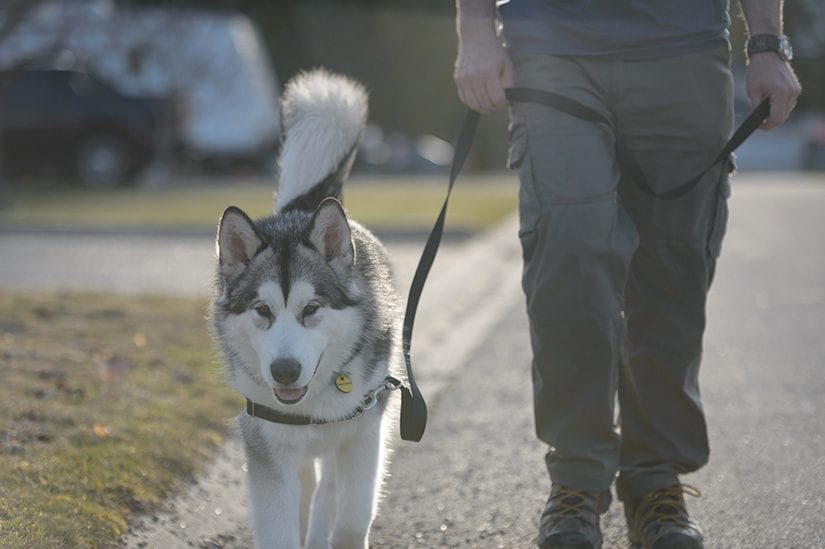
The BC SPCA opposes:
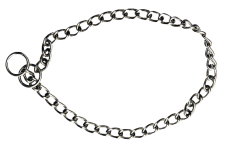 Choke chains: Choke chains are nasty, old-fashioned training devices. When jerked they snap against the throat of your dog, causing pain and discomfort. Even the newer “padded” styles can cause serious injuries to a dog’s neck, voice box and back.
Choke chains: Choke chains are nasty, old-fashioned training devices. When jerked they snap against the throat of your dog, causing pain and discomfort. Even the newer “padded” styles can cause serious injuries to a dog’s neck, voice box and back.
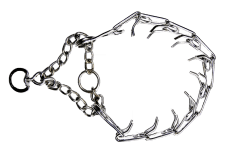 Prong (or pinch) collars: Prong collars have metal spikes that drive into the dog’s skin as she pulls or when you pull on it. The pressure and pain cause your dog to stop pulling.
Prong (or pinch) collars: Prong collars have metal spikes that drive into the dog’s skin as she pulls or when you pull on it. The pressure and pain cause your dog to stop pulling.
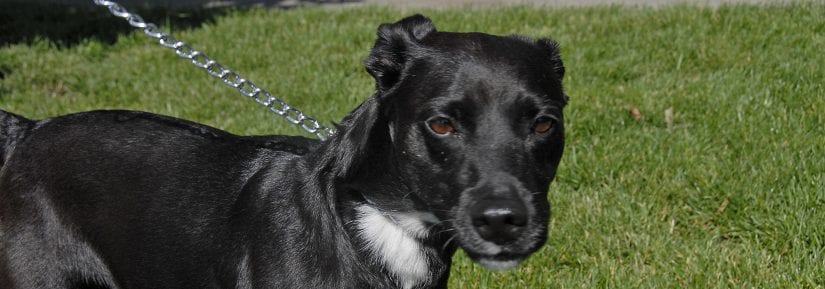
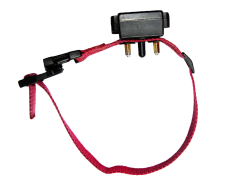
Electronic collars: Electronic collars are typically used for training, and should not be worn by the dog all the time. They offer different forms of correction: electric shocks (sometimes called “static corrections”), noisy beeps, vibrations, ultrasonic sounds, or blasts of air or citronella.
Many of these collars are controlled by remote, allowing the trainer to choose a setting (from mild to strong) and then deliver the correction when the dog misbehaves.
The problem with collars such as these is that they tend to punish the dog for unwanted behaviour and there is serious potential for abuse. They cause dogs anxiety, fear, distress, pain or injury – and therefore cannot be condoned by the BC SPCA.
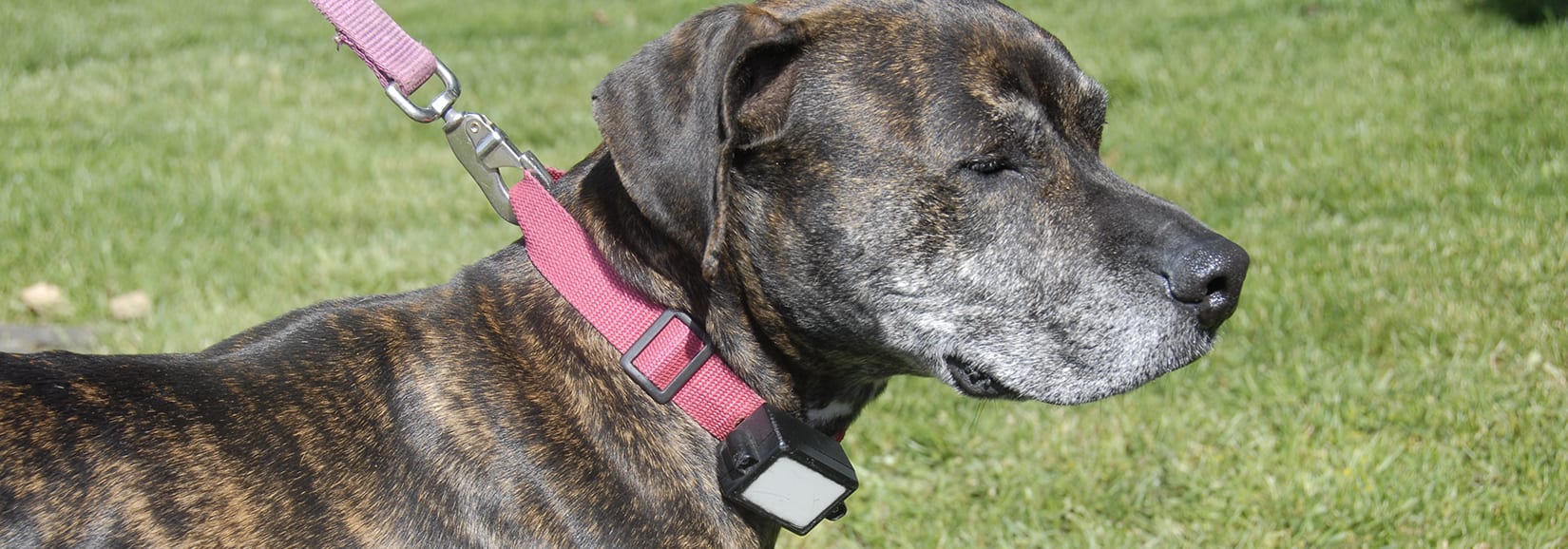
In specific instances, collars that only vibrate or beep can be used to grab the attention of a deaf dog or an off-leash dog who is too far away to hear your voice. Any training collar must be used carefully and under direction of a dog trainer who follows humane, positive reinforcement training methods.
Some electronic collars are specifically intended to prevent barking – the natural communication method of dogs. The BC SPCA is opposed to these collars and believes there are other, more humane ways to deter barking.
“You should also regularly check the tightness of your dog’s collar, especially as they grow from a puppy to a grown-up. The general rule is that you should be able to easily slide two fingers under your dog’s collar,” Monteith says.
“Using humane collars and training that uses positive reinforcement, force- and fear-free, will only help improve the experience of having a pet – for you and your furry family member.”
For humane dog collars and harness options, visit shop.spca.bc.ca.

